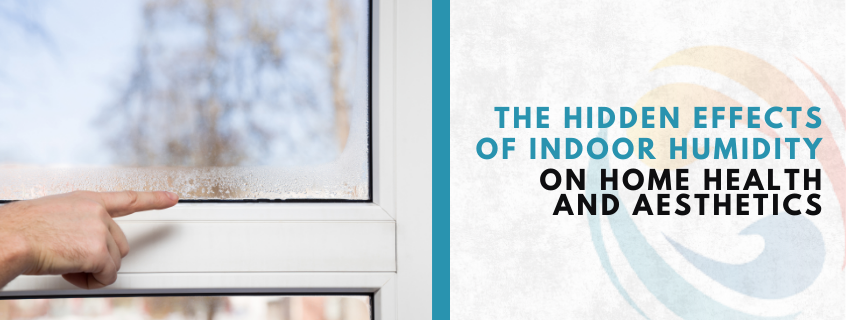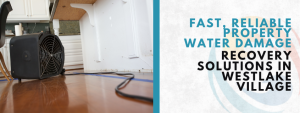
Have you ever walked into a room and felt like the air was just too heavy or sticky? Maybe the walls felt a bit damp, or there was a faint musty smell that wouldn’t go away. What you’re noticing might be more than just warm air—it could be a sign of indoor humidity problems. The effects of indoor humidity on home and health go far beyond making you feel uncomfortable. It can change how your home looks, smells, and even how safe it is to live in.
Many people only think about humidity during the summertime, but it’s a year-round concern. When the humidity indoors gets too high or too low, real problems can begin to show up. Moist air can make mold grow, wood warp, and paint peel. On the other hand, air that’s too dry can crack your walls, dry out your skin, and make breathing harder.
The key is finding the right balance. Managing humidity properly protects your home’s appearance and your family’s well-being. When you understand the effects of indoor humidity on home, you’ll be better prepared to keep your space safe, stylish, and cozy all year long.
What Is Indoor Humidity?
Humidity means the amount of moisture in the air. When we talk about indoor humidity, we’re talking about how much water vapor is inside your house. Most experts agree that a healthy humidity level for indoors is between 30% and 50%.
If the humidity level inside your home is lower than 30%, it’s considered too dry. You may notice things like:
- Dry skin or itchy eyes
- Cracked wooden floors and furniture
- Static electricity
- Irritated sinuses
If it goes above 50%, it becomes too moist. Signs of high humidity include:
- Foggy windows
- Mold in corners
- Musty odors
- Warped wood and peeling paint
Once humidity hits 60% or higher, it can quickly create serious health and structural issues. The effects of indoor humidity on home comfort start with small clues, but they build up fast when ignored.
How Humidity Builds Up Inside Your Home
You might think that the weather outside is the main cause of indoor humidity, but much of it comes from what happens inside your home every day.
Here are some common sources of indoor moisture:
- Hot showers without a vent or fan
- Cooking or boiling water in the kitchen
- Washing and drying clothes indoors
- Breathing and body heat from people or pets
- Leaky pipes or a damaged roof
- Poor insulation or unsealed windows
When these moisture sources pile up, the effects of indoor humidity on home structure and cleanliness become noticeable. Steam from the bathroom, for example, can lead to mold growth on the ceiling. Wet laundry inside a closed room can make the air heavy and damp.
The best way to stop problems before they start is by understanding where moisture is coming from and taking steps to control it.
Health Risks from Humid Air
Humidity affects more than just your walls and windows. The air you breathe every day plays a big role in your health. When the moisture level in the air rises, so does the risk for breathing problems and allergies.
Here are some ways humidity affects your health:
- Mold growth: Mold grows fast in damp places. It can cause coughing, sneezing, itchy skin, and asthma symptoms.
- Dust mites: These tiny creatures thrive in moist air and can trigger allergy attacks.
- Bacterial growth: Humidity helps bacteria grow on surfaces and in the air, increasing the risk of respiratory infections.
- Skin issues: Excess moisture can clog pores and lead to rashes, acne, or skin irritation.
- Frizzy hair and discomfort: Sticky, humid air can make you feel constantly sweaty or unclean.
The effects of indoor humidity on home health aren’t always obvious at first, but over time, they can lead to long-term health concerns for children, older adults, and anyone with allergies or asthma.
If you or your family members often feel sick at home but better outside, it might be due to the air quality indoors. Many homeowners turn to expert moisture control services to make sure the indoor environment stays safe and clean.
How Humidity Affects the Look and Feel of Your Home
Besides health concerns, high or low humidity can slowly damage how your home looks. The effects of indoor humidity on home appearance are usually found in areas like walls, floors, ceilings, and wooden furniture.
Some signs of damage include:
- Peeling paint or wallpaper
- Warped wood flooring
- Mold stains
- Condensation on windows
- Musty smells
- Cracked drywall or baseboards
The effects of indoor humidity on home materials like wood, fabric, and paint show up slowly at first. But the longer the problem lasts, the more costly and difficult it becomes to fix.
Red Flags to Watch Out For
Sometimes, the warning signs of humidity problems are easy to miss. Knowing what to look for helps you stop damage before it gets worse.
Here are common signs of high indoor humidity:
- Wet or foggy windows and mirrors
- Mold spots in bathrooms or basements
- Doors that stick or won’t shut properly
- Cracked or flaking wall paint
- Carpets or rugs that feel damp
- Lingering musty smells
- Frequent allergy or asthma symptoms at home
All of these signs point to a problem with humidity levels. Ignoring them could lead to hidden mold, damaged walls, and poor air quality. If you notice more than one of these issues, it’s a good idea to take action right away.
For long-term protection, complete home restoration solutions can treat these problems at the source—especially in homes with older construction or plumbing.
Wood Panels and Moisture Don’t Mix
Wood wall panels are beautiful and can add warmth to any room. But they’re especially sensitive to moisture in the air.
The effects of indoor humidity on home features like wood panels can include:
- Swelling
- Cracking
- Color fading
- Mildew behind panels
When installing wood panels, always make sure the area is well-ventilated. Using moisture barriers and sealants can help protect the wood. If your panels are already showing signs of damage, it might be time to call for professional help to check for hidden mold or leaks.
Smart Ways to Prevent Humidity Damage
It’s easier to prevent damage from humidity than it is to repair it later. Luckily, there are several affordable and simple steps you can take to reduce the effects of indoor humidity on home surfaces and air.
Here’s what you can do:
- Use a humidity meter
- Add a dehumidifier
- Run bathroom and kitchen fans
- Open windows
- Fix leaks fast
- Avoid drying clothes indoors
- Seal your home
- Use moisture-resistant materials
If you live near the ocean or in an area with frequent rain and fog, you may need more advanced help. In those cases, it’s smart to work with specialists who understand climate-based risks. They can help protect your home from both short-term and long-term moisture damage.
What Happens If You Ignore the Problem?
Sometimes, homeowners ignore signs of humidity because they think it’s just temporary. But that small bit of moisture now can turn into a big and expensive problem later.
If you don’t address it, the effects of indoor humidity on home safety and value will only get worse. Some of the long-term risks include:
- Serious mold infestations behind walls
- Weak or sagging ceilings from trapped moisture
- Rotted wood floors or beams
- Unsafe indoor air that affects children and pets
- High costs for replacing furniture, walls, or flooring
Don’t wait until your home smells musty or your paint starts peeling. Catching humidity issues early saves you money and protects your home’s charm.
Takeaway: Why Humidity Control Matters
The effects of indoor humidity on home life are easy to overlook, but they can have major consequences if ignored. From peeling paint to breathing trouble, moisture in the air affects everything around you.
But the good news is, you don’t need a big budget to manage humidity. A few smart changes and a bit of attention can go a long way. Keep an eye out for the warning signs, use tools to measure humidity levels, and don’t be afraid to ask for help if things get out of hand.
Remember, your home should feel fresh, look beautiful, and be a healthy space for your family. Don’t let something invisible like moisture ruin the spaces you love most.
Whether you’re protecting wood panels, improving your air, or just trying to get rid of that musty smell in the basement, taking control of indoor humidity is one of the best things you can do for your home.
Frequently Asked Questions About Indoor Humidity
How do I know if my home has a humidity problem?
If you notice musty smells, foggy windows, or peeling paint, those are signs your home may be too humid. A simple humidity monitor can confirm if levels are outside the healthy 30–50% range.
What’s the ideal humidity level for my home?
The best indoor humidity range is between 30% and 50% to maintain comfort, protect your belongings, and prevent mold or dryness. Staying within this range supports both home aesthetics and health.
Can high humidity make my family sick?
Yes, excess humidity can trigger allergies, asthma, and respiratory issues due to mold, dust mites, and poor air quality. It also creates an environment where bacteria and mildew thrive.
What can I do to lower indoor humidity naturally?
You can open windows, use exhaust fans, fix leaks, and avoid drying clothes indoors to reduce moisture buildup. Dehumidifiers are also very effective in high-humidity rooms like basements or bathrooms.
Will controlling humidity help preserve my wooden walls and furniture?
Absolutely—balanced humidity prevents warping, cracking, and discoloration in wood surfaces and furniture. It also reduces the chance of mildew or mold forming behind decorative wall panels.





